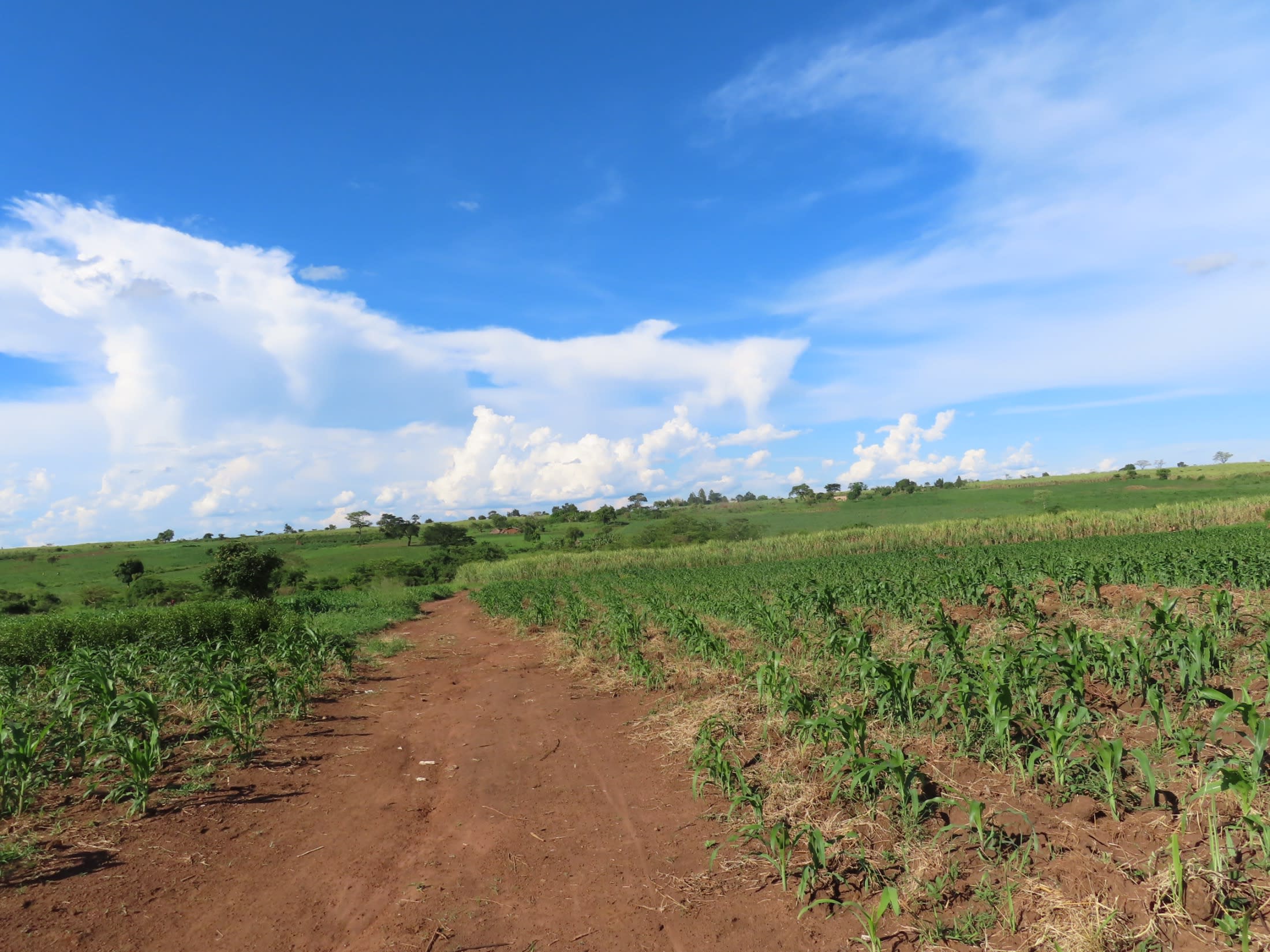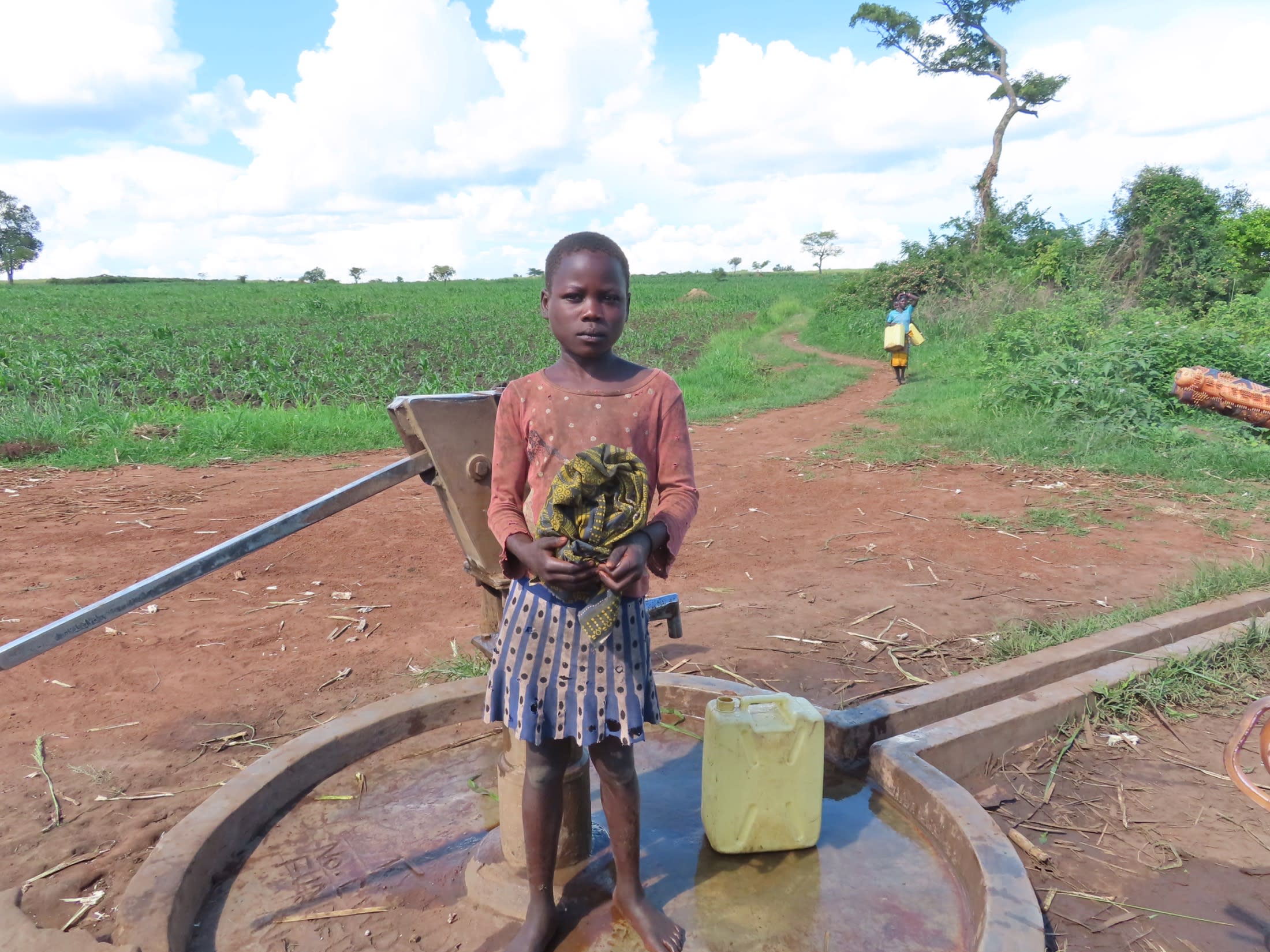The terrain around Kyandangi is gently sloping and covered with maize and sugarcane plantations. The main livelihood in the area is farming.
It is a unique community because of the diversity of tribes of Banyoro, Lugbaras, Alurs, and Basoga people that live together. This diversity has led to several intermarriages and, as a result, a more unified community.

The community's one water source serves over a hundred and fifty households of nearly a thousand people. This borehole has worn out pump parts leading to frequent breakdowns. It is also open to contamination as runoff uphill directs itself towards the well, and there is an open soak pit where animals gather to drink.
There is a huge gap in access to enough clean and safe drinking water when this borehole is nonfunctional. We need to restore the borehole so clean water can continue to flow. We will also improve on the sanitation situation around the water point to make sure it stays clean and safe for drinking.

"I am a farmer. Traditionally, it's the role of women to fetch water, but due to the long distances they have to walk to collect water, they end up preparing lunch very late, and output is reduced in the gardens. Due to the long queues and frequent breakdowns at the borehole, we resort to using dam water which is dirty and shared with animals and, above all, not fit for drinking. This keeps us very thirsty while in the gardens and affects our concentration," commented Zakayo Apiyah.

"I am always woken up very early in the morning by my mother and told to clean the compound after which I go to collect water at the borehole which is nearer our home compared to the ones in the next village. The water is used to wash utensils and prepare breakfast before we go to the garden. When the borehole is down, we use dam water where the owner of the dam always chases us away because he says it is meant for his cows," said Harriet, a 10-year-old girl.
Here’s what we’re going to do about it:
Rehabilitated Well
We are going to restore water to the broken-down borehole. Since this water point is located at the center of the village and easily accessible by the majority of people, unlike the springs which are located at the far ends of the village, when this borehole is restored to its original status, it will provide the community with easy access to clean and safe water. We will remove the old pump, clear out the well, reinstall a new stainless steel pump, and build a new well pad to protect the water.
Training
Training’s main objectives are the use of latrines and observing proper hygiene practices since these goals are inherently connected to the provision of clean water. Open defecation, water storage in unclean containers, and the absence of handwashing are all possible contaminants of a household water supply. Each participating village must achieve Open Defecation Free status (defined by 1 latrine per household) before the pump installation for a shallow hand-dug well.
This social program includes the assignment of 1 Community Development Officer (CDO) to each village. The CDO encourages each household to build an ideal homestead that includes a latrine, handwashing facility, a separate structure for animals, rubbish pit, and drying rack for dishes.
We also implement the Community-Led Total Sanitation (CLTS) approach with each of our village partners. This aims to improve the sanitation and hygiene practices and behaviors of a village. During these sessions, village leaders naturally emerge and push the community to realize that the current practices of individual households – particularly the practice of open defecation – are not only unhealthy but affect the entire village. CLTS facilitates a process in which community members realize the negative consequences of their current water, sanitation, and hygiene behaviors and are inspired to take action. Group interactions are frequent motivators for individual households to build latrines, use the latrines, and demand that other households do the same.
Improved Sanitation
The aim is that all households own an improved latrine. Many households do not use a latrine but use the bush. Due to open defecation, feces are spread all over the village. This leads to waterborne diseases and contamination of groundwater and surface water. Our aim is that the community is able to live a healthy life free of preventable diseases. We endeavor that at the end of our presence in the community, people will have both access to sustainable, clean water and access to sanitation. We have now organized families to form digging groups for latrine construction, and empowered them with tools they will need.

 Borehole Well and Hand Pump
Borehole Well and Hand Pump




























